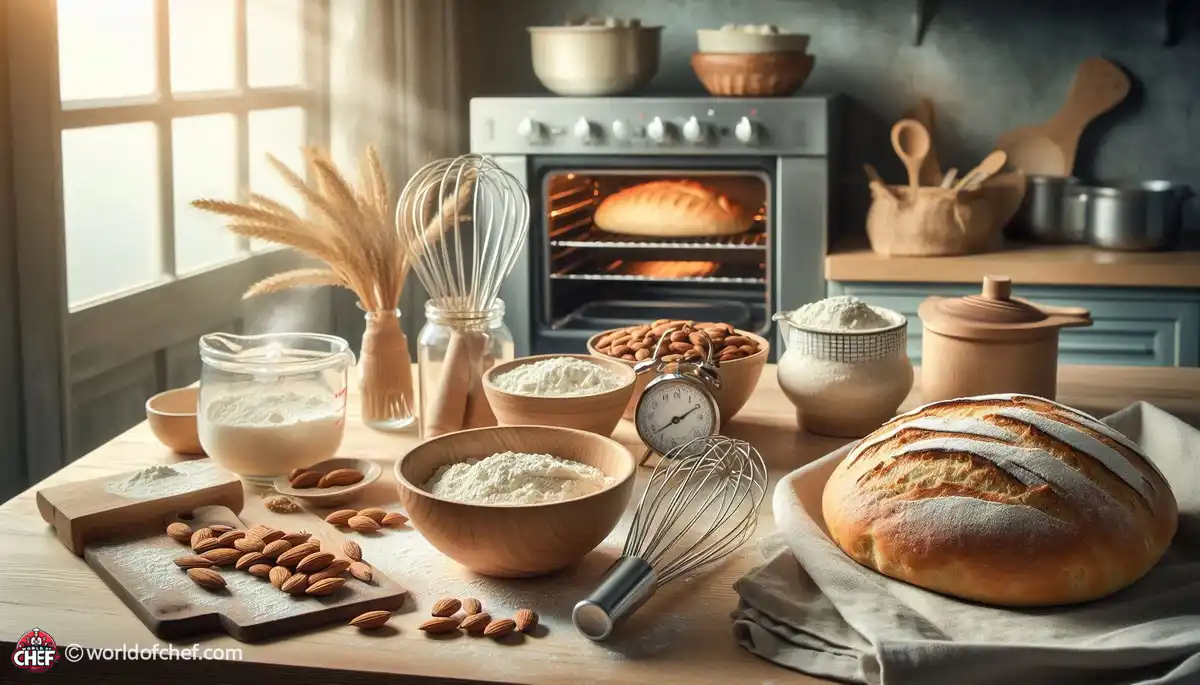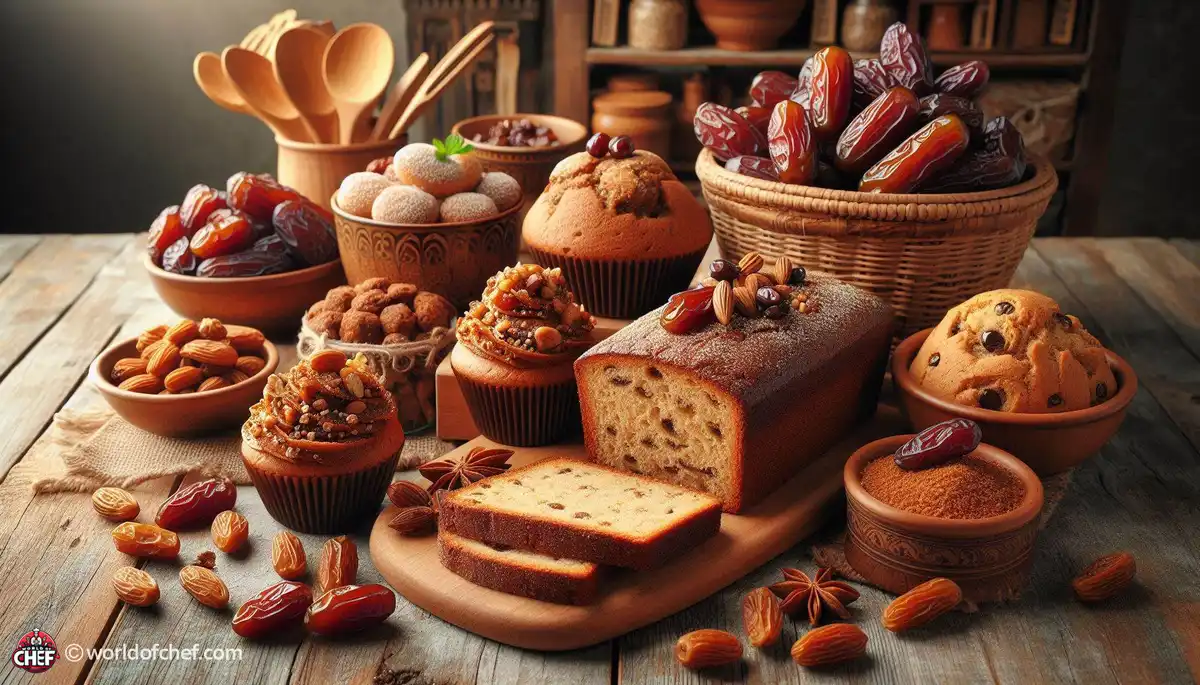
Understanding Oven Hot Spots and How to Bake Around Them
Russell Comeaux - Mar 30, 2025 - 13 min read


Baking without gluten may be a rewarding but also challenging experience. Whether you handle a gluten intolerance, celiac disease, or just look into gluten-free options, you should understand the distinct nature of gluten-free baking. While this opens up a world of possibilities, it is matched with its own common pitfalls. Let's explore some of these mistakes and how to avoid them for successful gluten-free baking.
One of the most important things when switching over to gluten-free baking is choice of flour. Many bakers assume that just any old flour will be a one-to-one substitute for wheat flour. However, gluten-free flours-examples include almond flour, coconut flour, and rice flour-behave differently in a recipe. For example, almond flour is heavy and moist; coconut flour absorbs. These differences mean that you often need to tinker with liquid and fat content in your recipes.
This will give you your desired baked goods texture and flavor. Furthermore, it is an excellent point to try out different combinations and see which one is the best on your favorite recipes. An all-purpose gluten-free flour blend can also make things a bit more manageable, and even those have different rationing of their ingredients.
Always look at the ingredients label to find any starches or additives that will not necessarily aid you in baking. In fact, some of these mix blends include xanthan gum and guar gum as components in their product for better simulating elasticity when using the substitute of gluten in it. If such starch is missing in the type you're using, it would need to be supplemented elsewhere. The Addition of Starches
The main role of starches in gluten-free baking is the contribution of an important component. Many bakers often tend to overlook the starches and think that they can avoid this process. Tapioca, potato, and corn starches may improve texture, moisture retention, and structure in gluten-free recipes. They serve as binding agents that make your baked goods chewy, which is what everyone desires.
Using a combination of flours and starches will produce better texture when you develop your gluten-free recipes. The almond flour mixed with tapioca starch can provide the best ratio of moisture to lightness. Just pay attention to the ratios. Too much starch results in a gummy texture while too little starch will cause your baked goods to become crumbly.
Experimenting with different starch combinations will hone your recipes even further. Different starches have different properties, so keep track of what works and what doesn't. As you gain experience, you will learn how different starches and flours behave, making your gluten-free baking experiments much more successful.
In most traditional baked goods, eggs add moisture, help in holding all the ingredients together, and provide overall structure. It is only when the absence of gluten necessitates extra egg usage that they really step up. Still, a few bakers think they can just omit them. This would mean ending up with denser, drier crumb results.
If you are a vegan or just don't like eggs, there are excellent alternatives available. Flaxseed meal or chia seeds can be used as a great binder when mixed with water. Every substitute has its ratio, so it's always good to do some research on the best way to replace an egg. A good ratio is one tablespoon of flaxseed meal with three tablespoons of water.
You may also experience some unexpected flavors and textures when trying alternatives to eggs. Unflavored unsweetened applesauce is a binder but also adds moisture and a hint of sweetness. Remember, substituting eggs sometimes means adjusting other components in the recipe to get the balance right-for instance, decreasing the total liquid in a recipe.
Eggs provide moisture, and moisture is the secret to those tender, fluffy textures. Without eggs, or failing to account for the moisture contained in egg substitutes, your product will likely end up dry or too dense, and this is why most bakers believe that gluten-free recipes just can't taste as good.
If you do use a substitute for the eggs, remember that some of the wet substitutes, such as mashed bananas or yogurt, introduce moisture as well. In addition, they may also alter the flavor of your baked goods, so make your choice based on what you want your final product to be. If using a wet substitute, you can omit some other liquids to get the right balance.
On the other hand, monitoring baking time and temperature is very crucial using the substitutes. Altered factors can help the gluten-free baked products yield flawlessly that even texture becomes light and fluffy as well.
Leavening agents are quite important in gluten-free baking since they are agents that cause your baked goods to rise to the texture you need. Most new bakers to gluten-free tend to underestimate the big deal surrounding the proper use of the right leavening agents. Many traditional recipes base their structures on gluten. So you have to make very deliberate choices about the leavening you select when the gluten's absent.
The two most commonly used leavening agents are baking powder and baking soda. Baking powder is an acid-base mixture; hence, it can be activated once it's mixed with the wet ingredients to form the bubbles. Baking soda needs an acid to activate it. It would help if you knew which to use at what time so that your gluten-free baked goods do not lose out on the fluffy texture.
Always ensure that your leavening products are fresh as old or spoiled products will not serve the purpose to give you the lift you want. Then measure correctly; excessive leavening will give baked products a rapid upward movement, and then that will come crashing down immediately. The result is uneatable heavy pieces, disappointing if a light lighthearted finish was expected.
Yet for the adventurous gluten-free baker, yeast is another absolute necessity. Most bakers forget the different behaviors a gluten-free dough has against the regular dough. Firstly, yeast needs an ambient environment, warmth, as well as sugar to "wake up." Knowing the above helps ensure that it will have risen properly during baking.
When using yeast, allow your dough to rise in a warm, draft-free space. This is particularly crucial for gluten-free breads, which may have to rise longer than their gluten-containing counterparts. Be patient: many bakers report that letting dough rise twice produces the perfect texture.
Another good experimentation is the type of yeast because different types can bring very different results. Sometimes, instant yeast is easier to use because it does not need proofing, whereas active dry requires a little more handling. Knowing how each performs will lead to better baking results in gluten-free baked goods.
The biggest challenge in baking gluten-free is getting a texture that's right on par with traditional baked products. Gluten is what typically gives the chewiness found in traditional baked goods, therefore, when it is removed it is a must to determine how to replace that quality. Most bakers overemphasize flavor in their baking, forgetting entirely about the importance of a good texture.
Including a variety of flours and starches can contribute to pleasant textures. It is also a good means of replicating the mouthfeel of gluten-containing products. For example, mixing almond flour with tapioca starch will contribute to a lovely chewiness that many gluten-free baked goods lack.
Mixing method: Over-mixing gluten-free batter leads to a dense final product. Mix just until combined, and let the batter rest for a few minutes. This allows the flours to hydrate properly, improving the overall texture of your baked goods.
Bake flavor with gluten-free baking. So many bakers believe that gluten-free automatically means losing flavor-that couldn't be any further from the truth, though. High-quality flavor ingredients make all the difference. Add spices, extracts, and even fruits for an exciting experience in baking gluten-free.
Experiment with flavor. Add vanilla extract or even just a splash of almond to make a real difference in the final taste. Citrus zest brightens baked goods and can really provide an uplifting twist.
Consider the sweetness level in your recipes. Gluten-free flours sometimes have a nutty flavor, so adjusting sugar levels or trying different sweeteners can help achieve a balanced taste. Remember that taste testing is crucial, and don't hesitate to tweak your recipes until they suit your preferences.
Preparing a gluten-free bake demands patience, something most bakers are not accustomed to. One can rush through all the processes involved, and sometimes the results turn out bad. From the mixing up to the baking time, the difference comes in time, and with that patience, you may be having a good gluten-free outcome.
It is particularly important to rest gluten-free dough or batter, as this resting period enables the flours to soak up moisture, thus contributing significantly to the texture and taste of the baked goods. A short resting period, for example, will give a gluten-free muffin more uniform crumb and improved rise.
Be mindful of your baking temperatures, too. Gluten-free baked goods often require just a bit lower temperatures as opposed to traditional recipes. This helps prevent overbrowning on the outside while insuring that the inside does cook through properly. In case you don't know, it's not crazy to invest in an oven thermometer to make sure you do get the right temperatures.
One common mistake that will spoil even the best gluten-free recipes is overbaking. Gluten-free baked goods tend to be a bit fragile and can easily dry out if left too long in the oven. One has to be observant with the baking times.
Try a toothpick test. Test your baked products for doneness by piercing a toothpick into the centre of your baked products. If the crumb is clean or only lightly moistened, then your baked goods are done; if the toothpick comes out wet, bake for a while longer and check frequently in order not to overbake.
Remember that gluten-free products will continue to cook a little in the oven once you have removed them due to residual heat. Most likely, if they look almost done, it is better to take them out of the oven a little early so they remain soft and moist.
Once you have baked your gluten-free treats, proper storage is the way to ensure they remain fresh and their texture. Most bakers make this mistake, and by the time you consume their baked goods, they turn out dry or stale. You will learn how to store your gluten-free creations to keep them fresh for days ahead.
Most gluten-free baked goods need to be kept in airtight containers. This way, they remain fresh and won't be able to take on the odors you might not want them to from your kitchen. Lastly, freeze anything you're not going to use in a few days. Gluten-free products can be frozen well and consumed later with no compromise to taste or texture.
If you're going to bake cookies or muffins, it is best to add parchment paper between layers to keep them from sticking. And for bread, wrap with plastic wrap or aluminum and then place it in airtight containers so it can keep the moisture confined.
It's always good to check the stored gluten-free baked goods from time to time for freshness. Gluten-free baked items can be more likely to spoil faster than traditional baked items. Look for stale or moldy appearance, and use your intuition. If it looks or smells off, it's better to get rid of it.
Most leftover items that you cannot consume can be improvised for other uses. Dry cookies can even be blended and mixed into a crust to top a fantastic gluten-free cheesecake. Many of these leftovers will just reduce waste and also make your baked goods in some new ways.
The challenge of gluten-free baking need not come across as scary. Common mistakes and knowing the individual requirements of gluten-free baking must be understood for you to come up with scrumptious, filling foods. Enjoy the time you spend trying new recipes and experimenting-they are some of your most patient days in the kitchen. Before you know it, you will turn into a master of this type of baking, keeping your friends and family happily pleased with each new bite. Happy baking!

Russell Comeaux - Mar 30, 2025 - 13 min read

Hailey Morrill - Mar 21, 2025 - 18 min read

Bobby McKelvey - Mar 18, 2025 - 12 min read

Mackenzie Silvers - Oct 26, 2024 - 16 min read